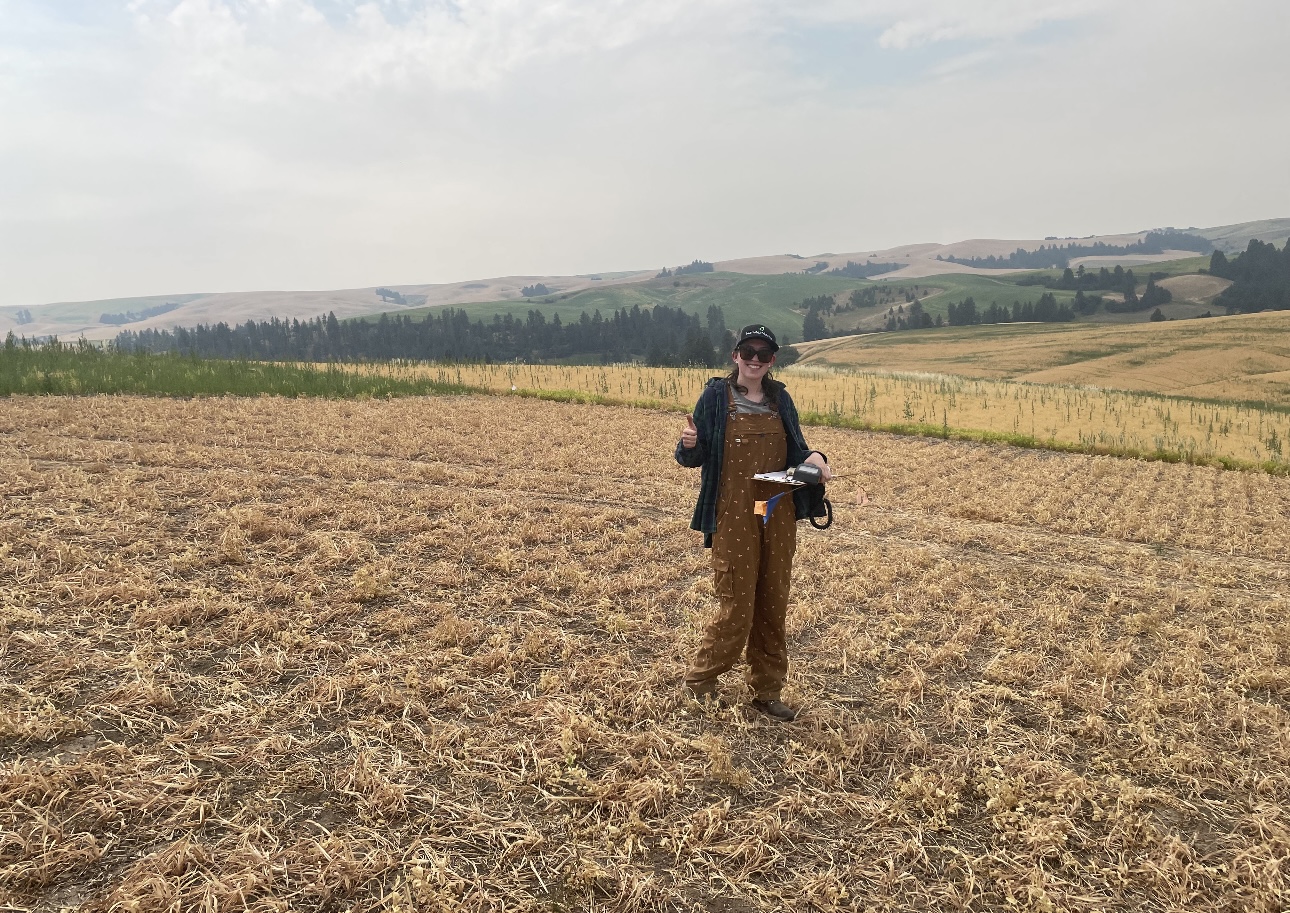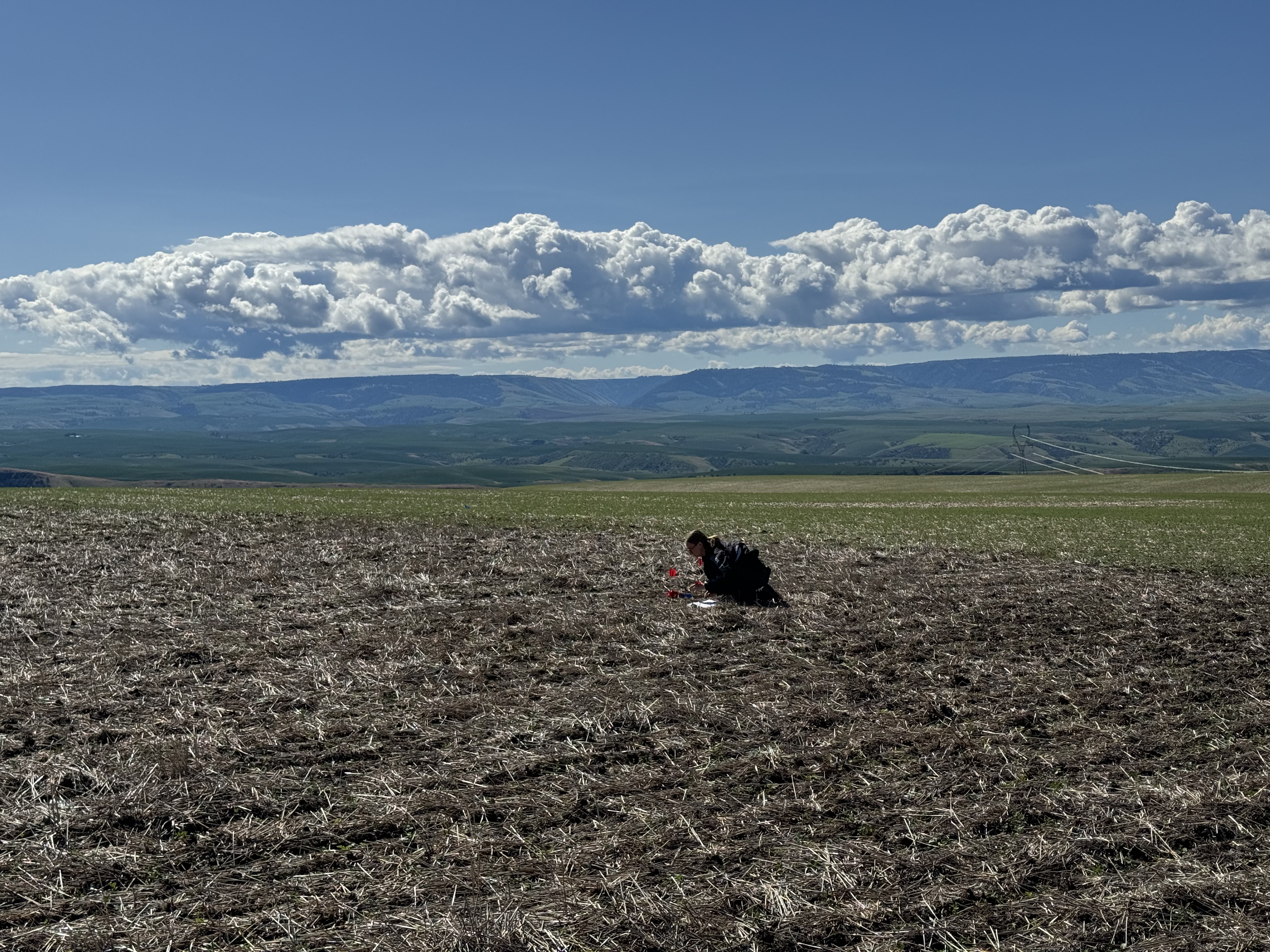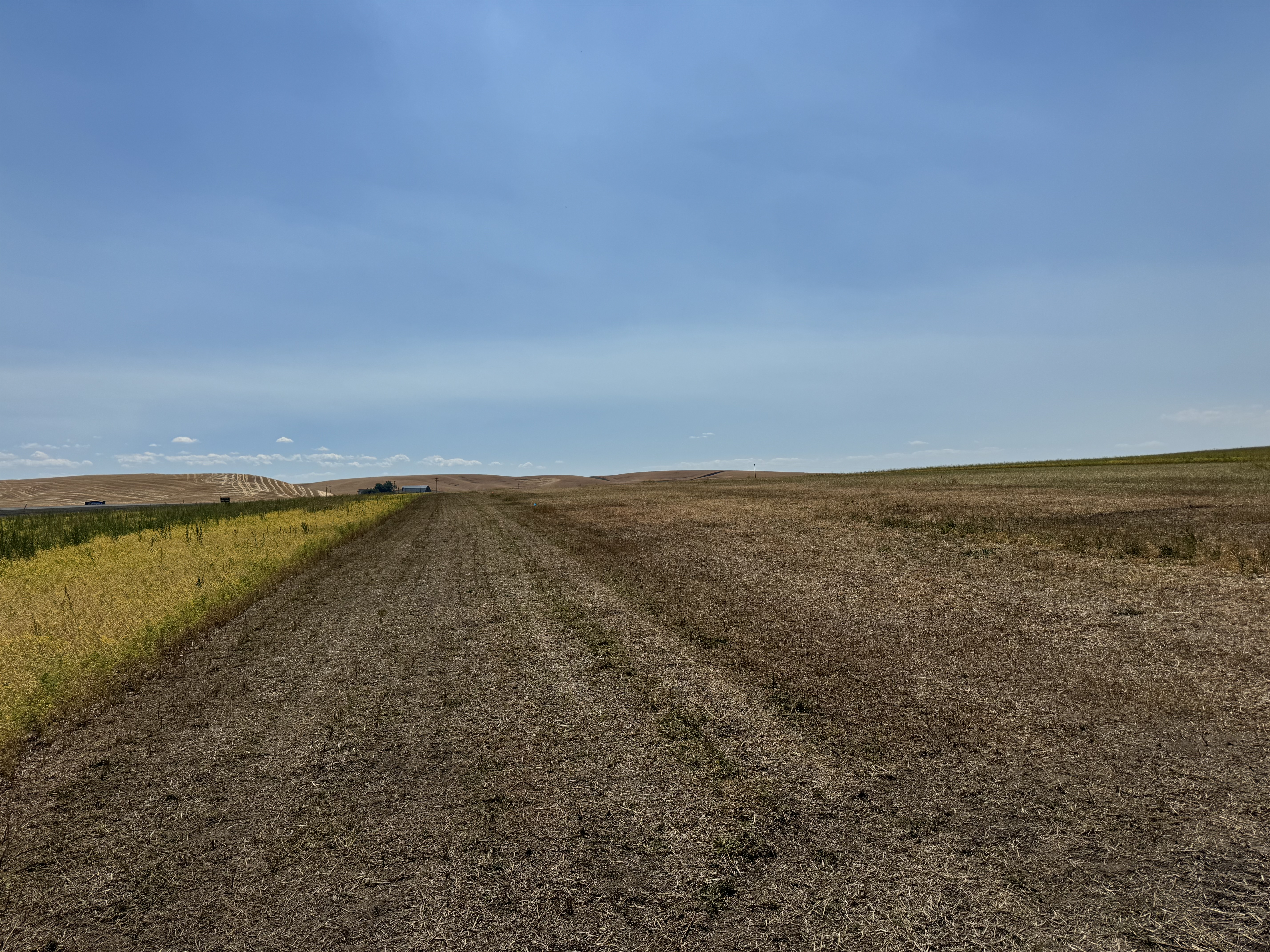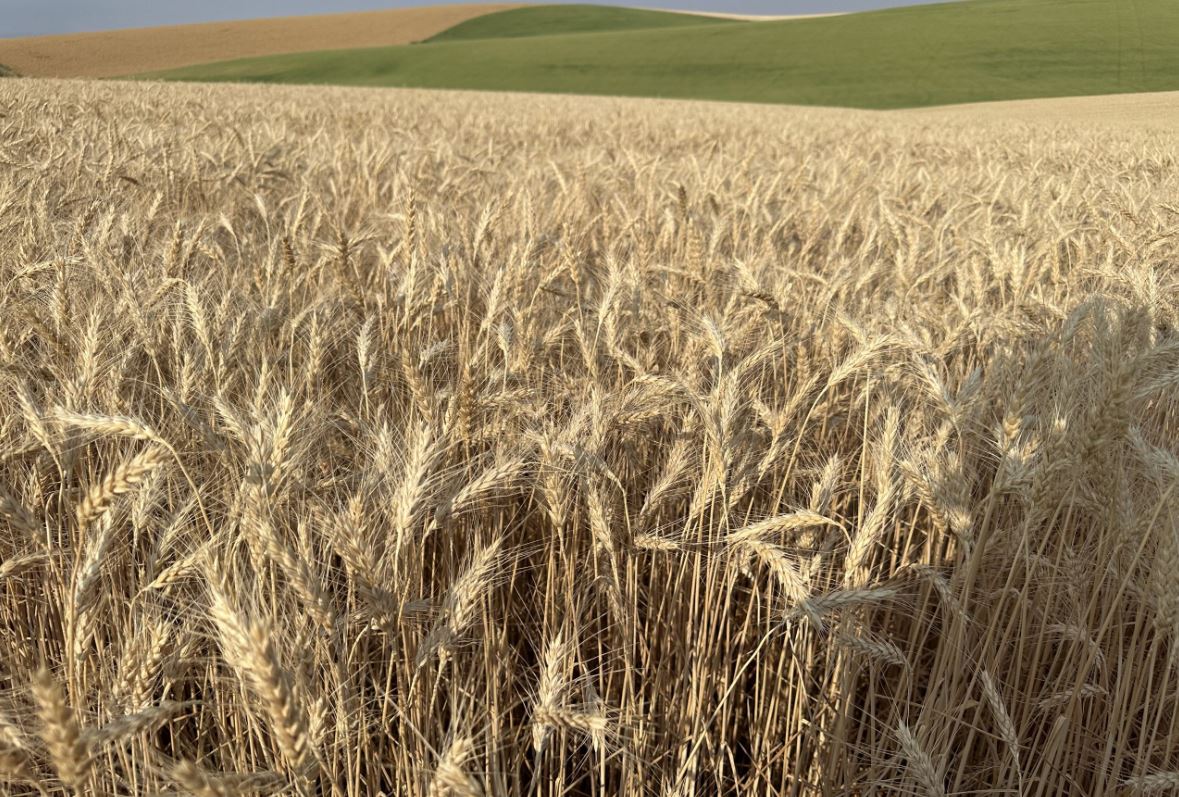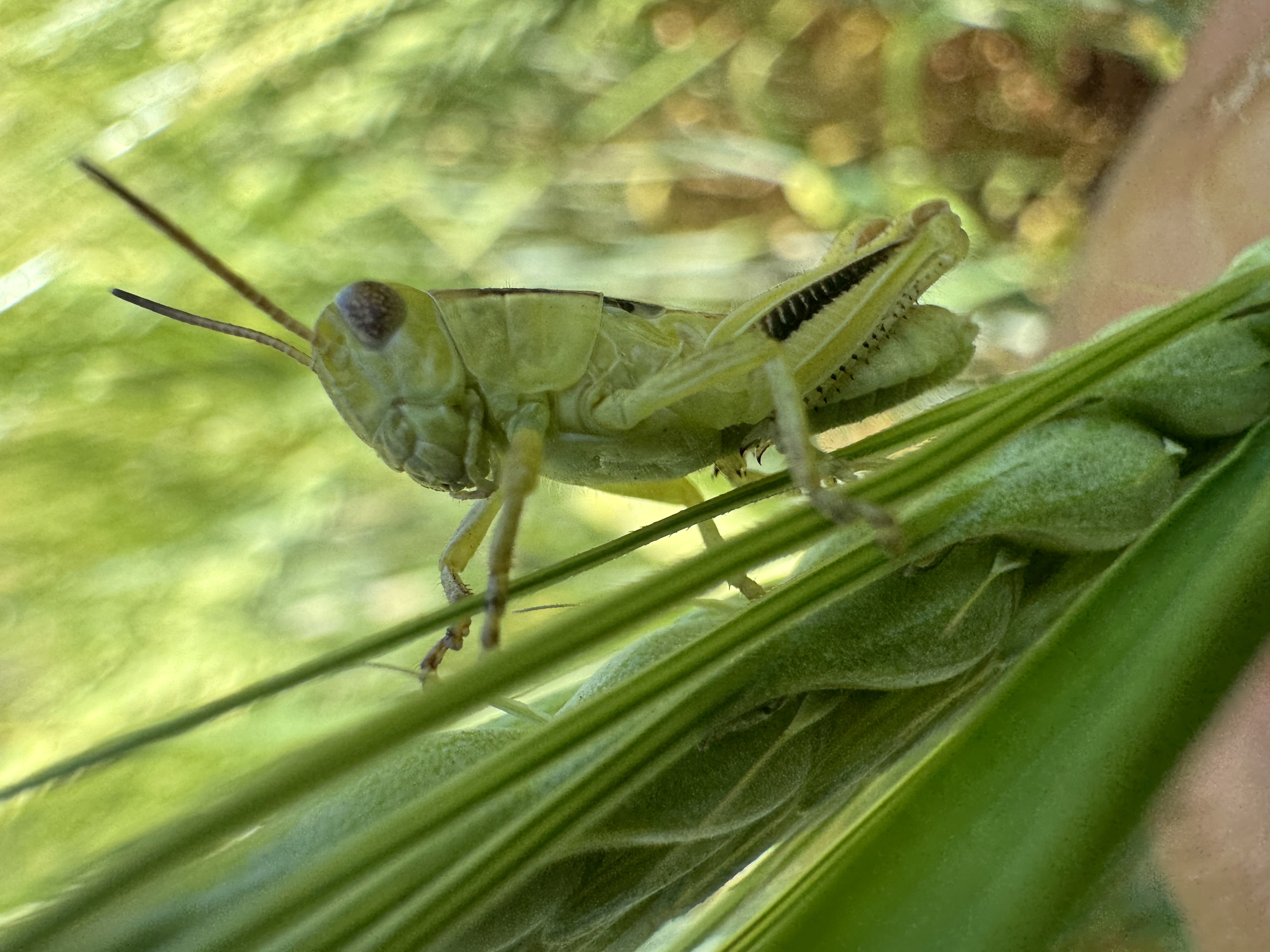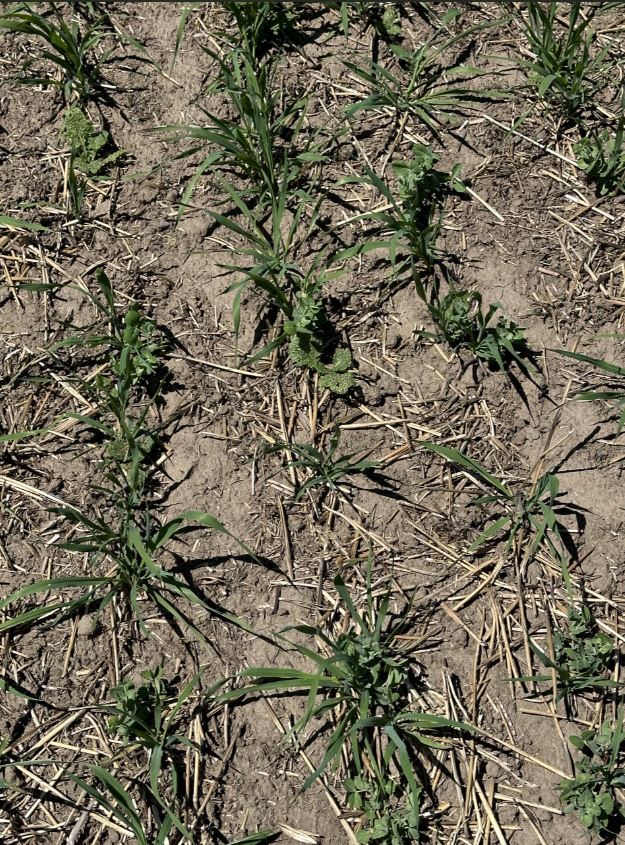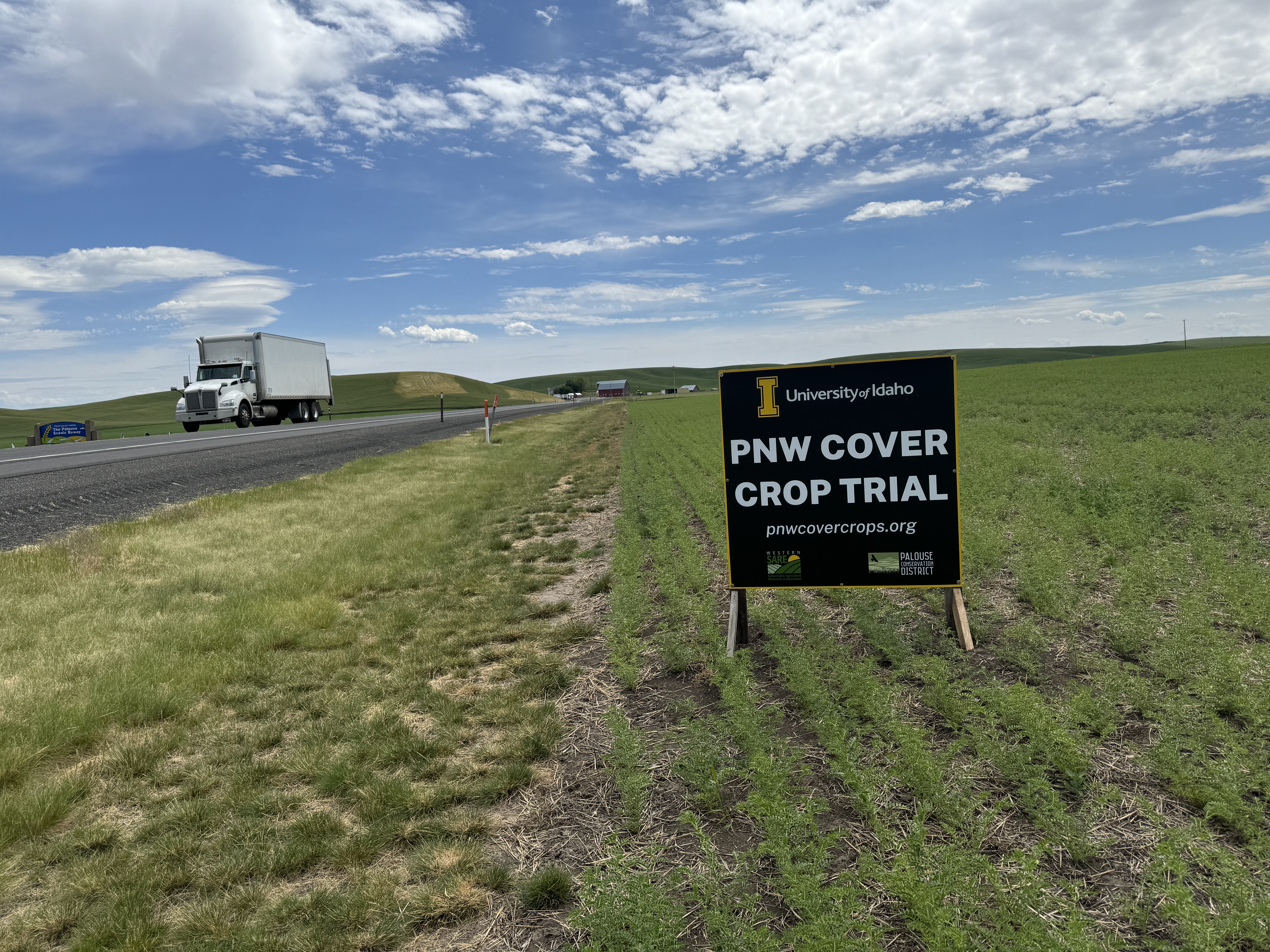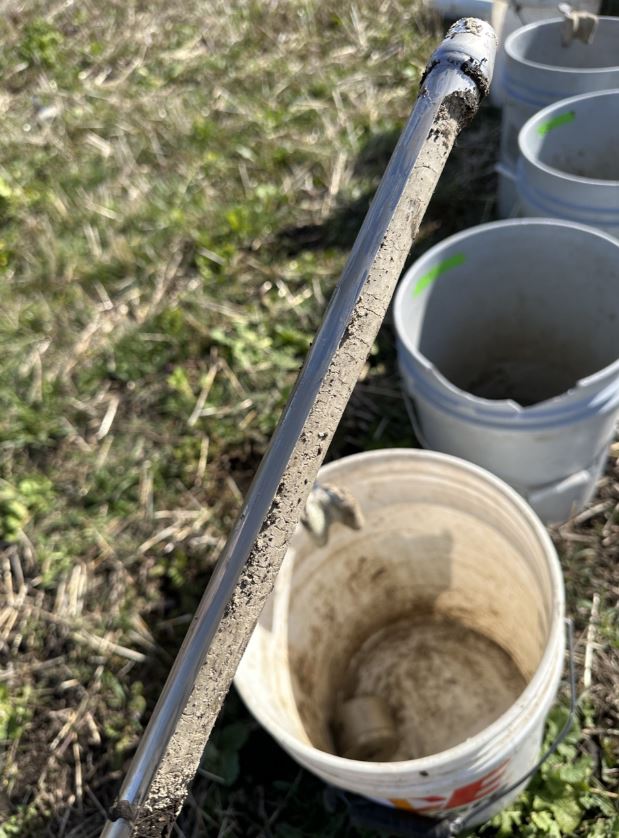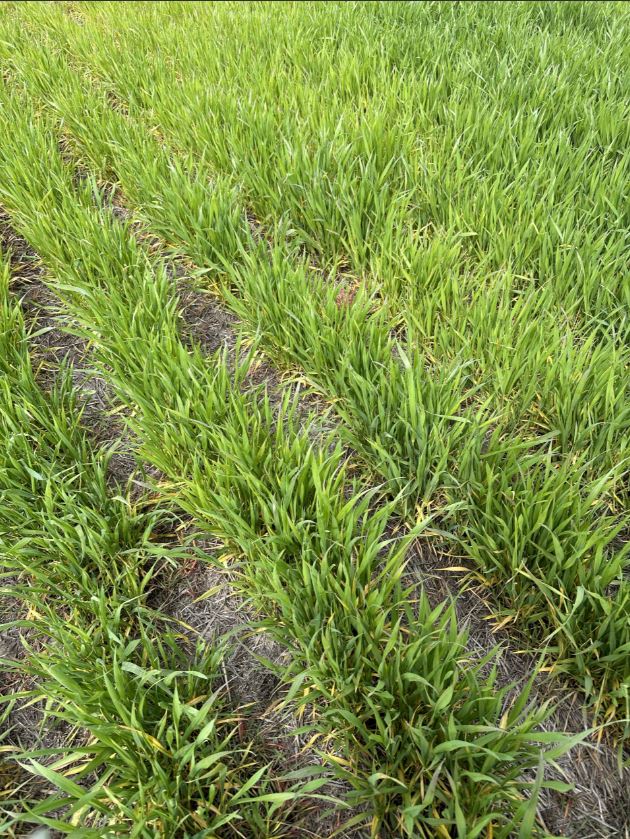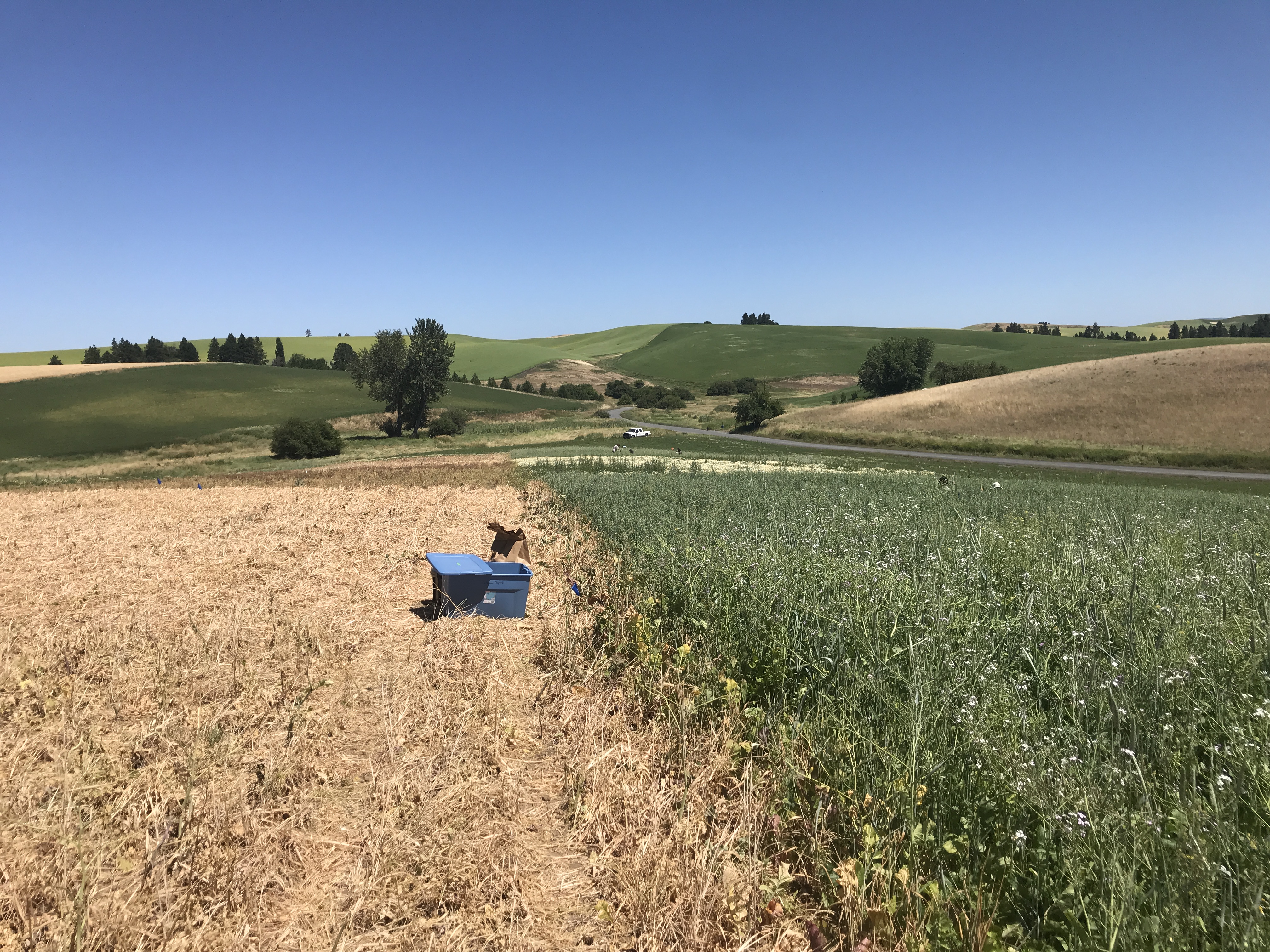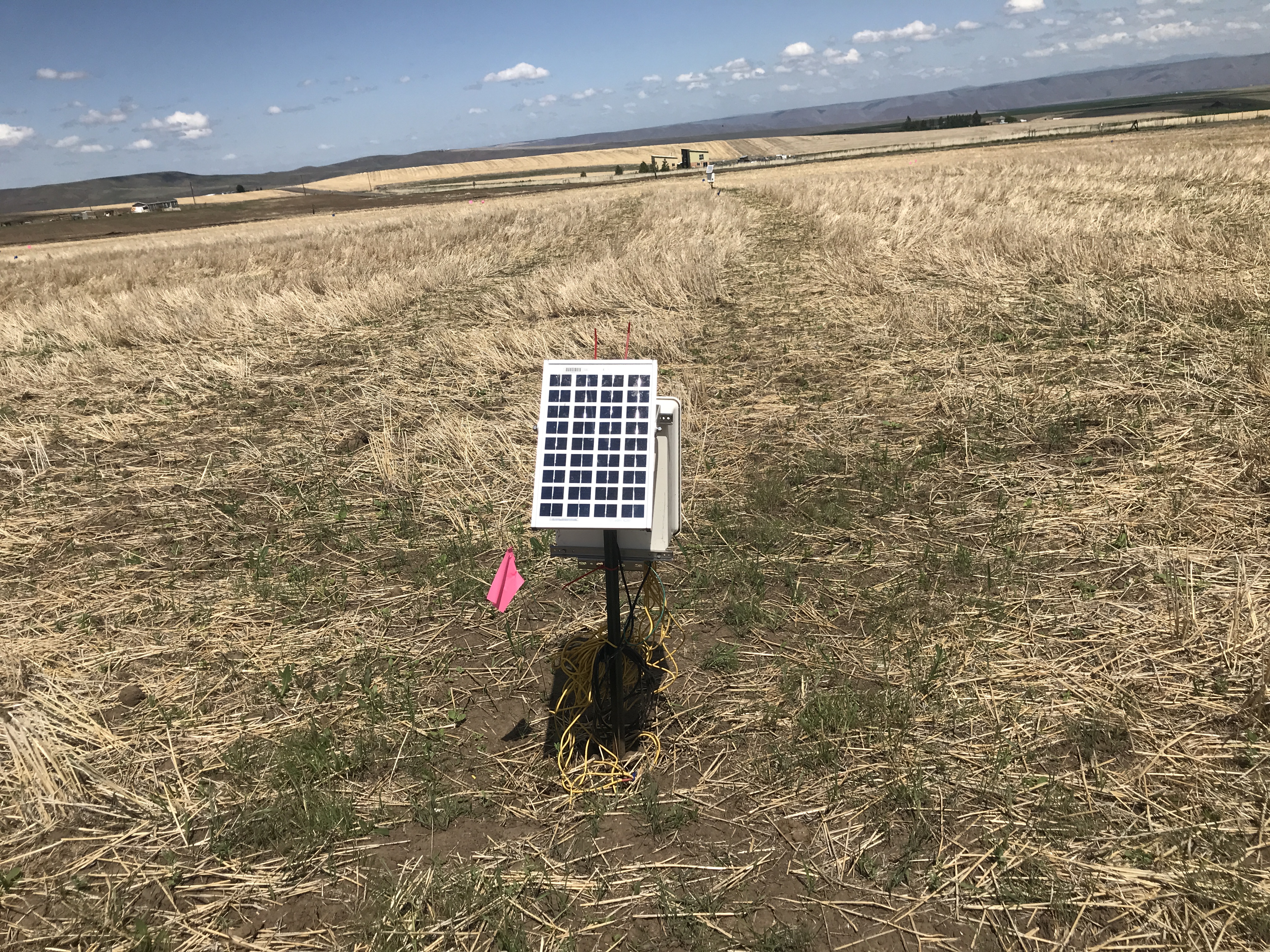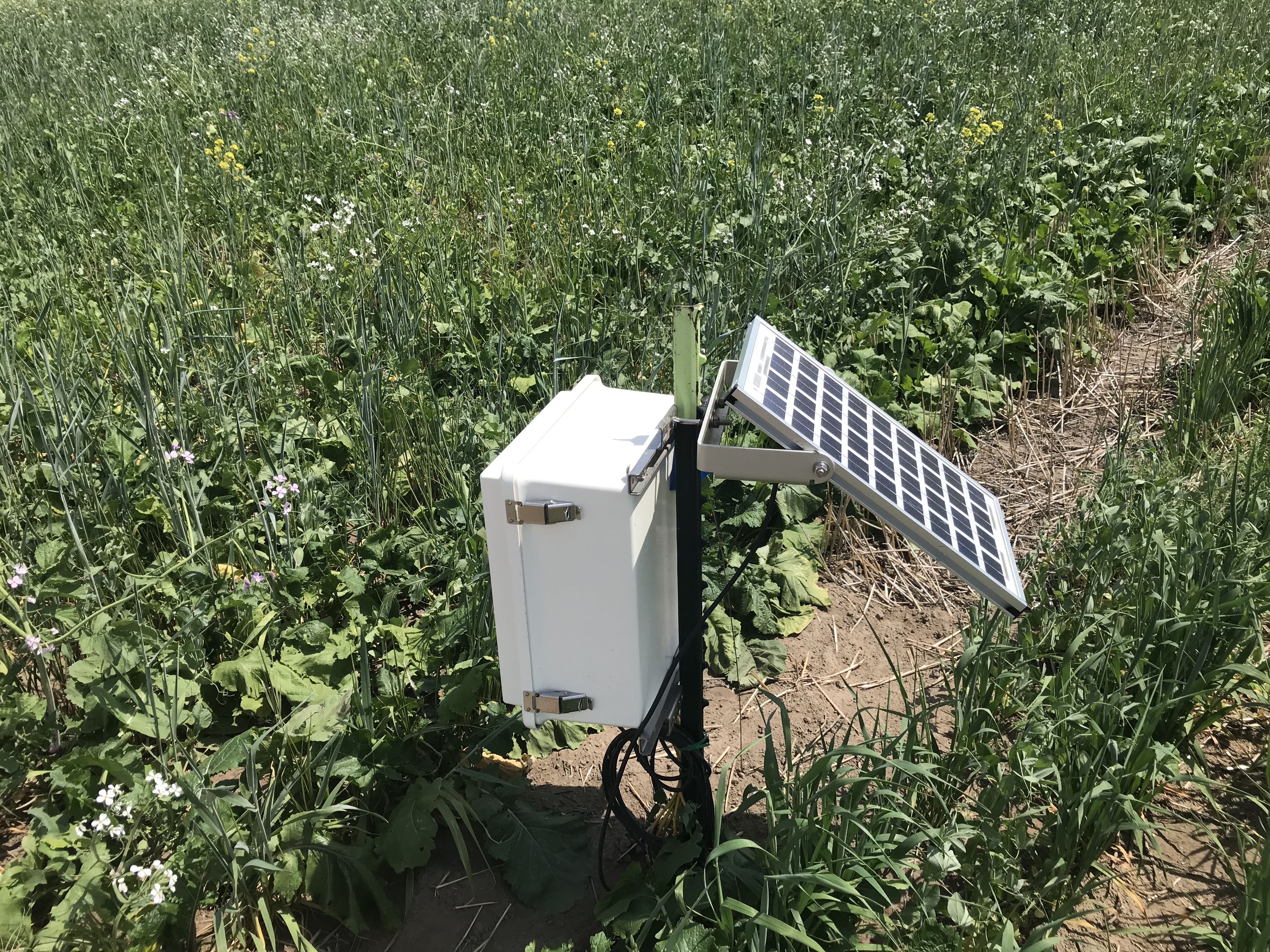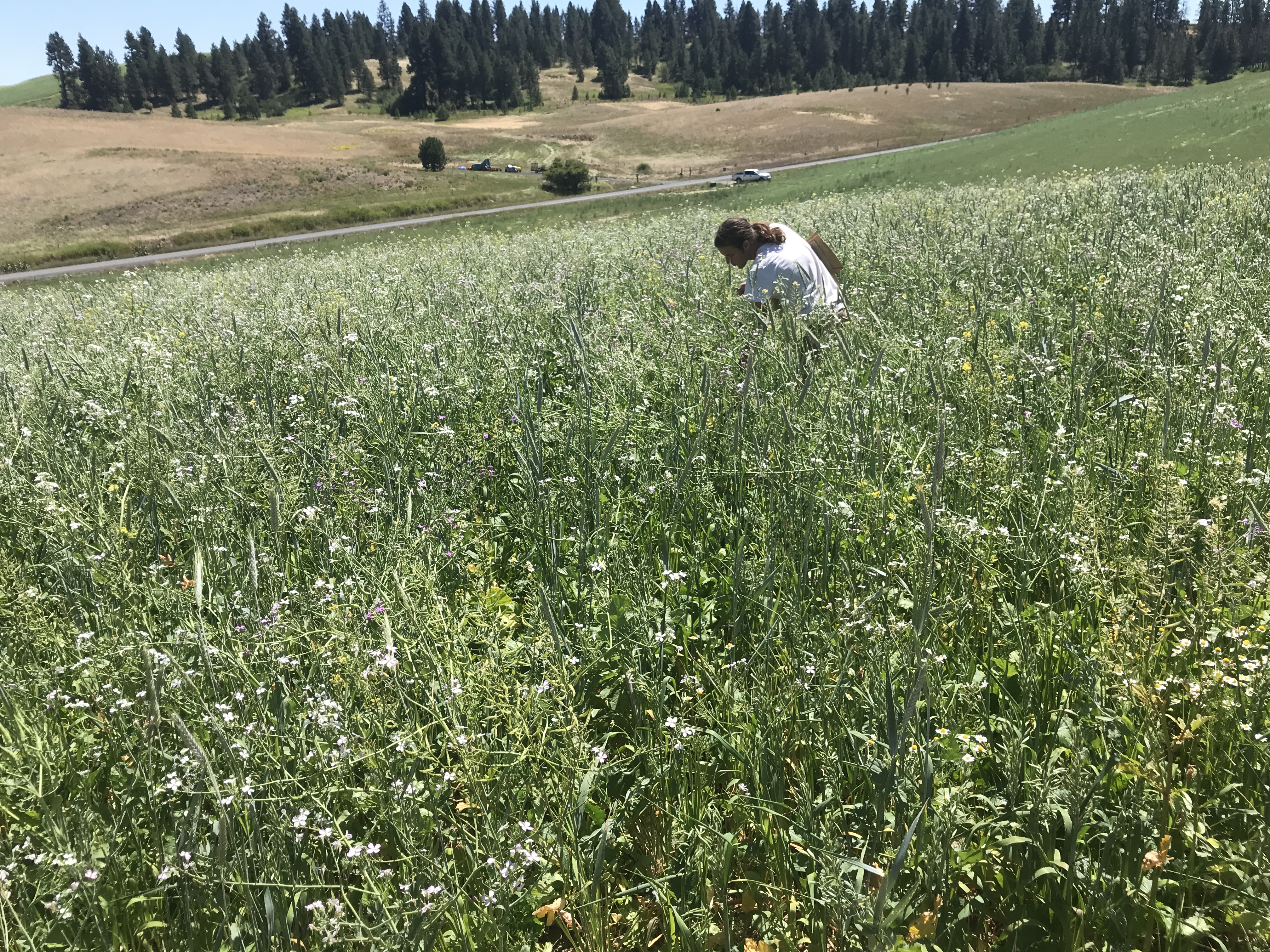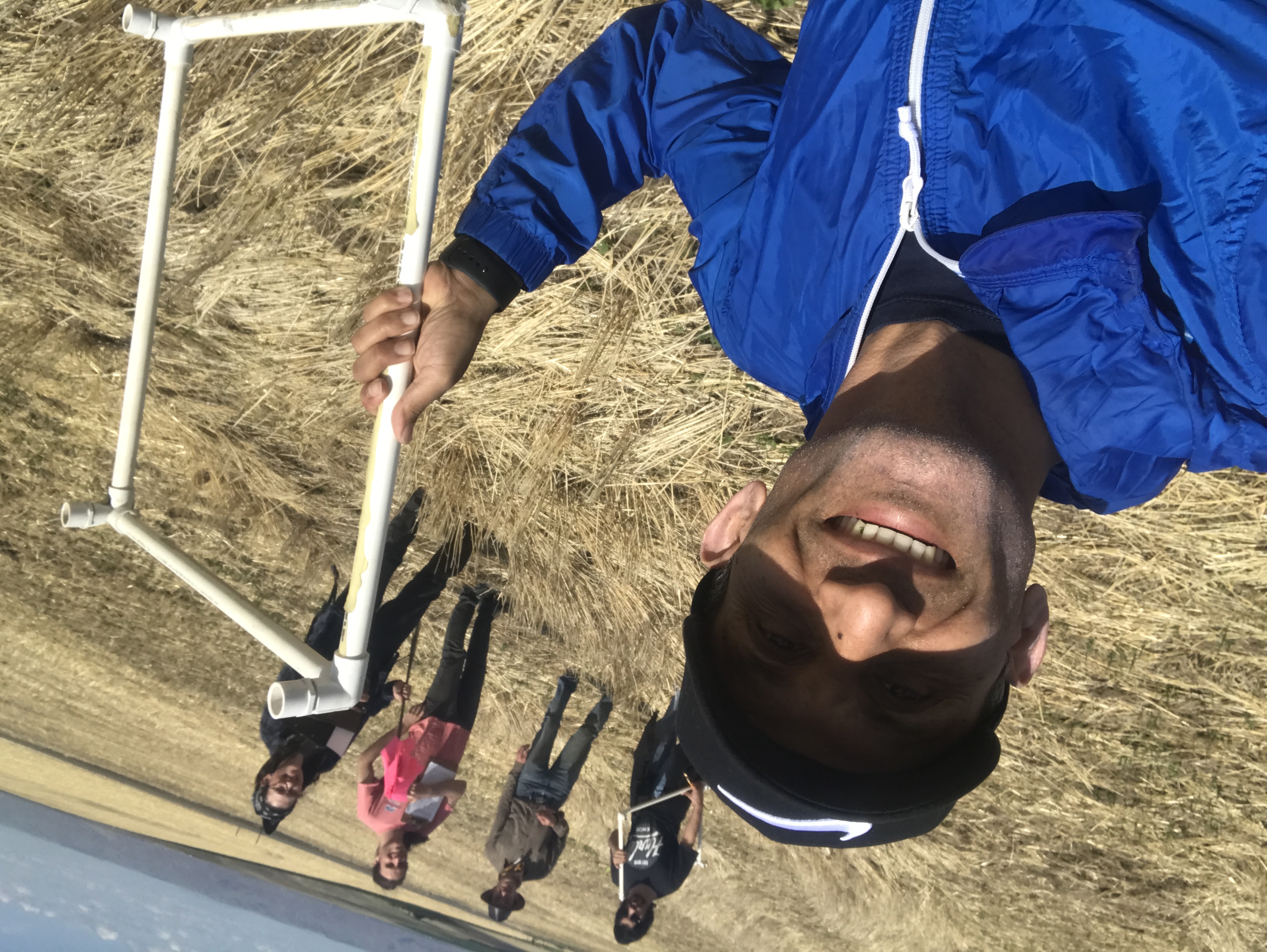Summer 2024 - Field Work Summary
An additional eight fields (four annual cropping zone and four transition cropping zone) at producer cooperator's farms were identified and flagged by late spring. Nine strip plots (three replicates x three treatments: low diversity, high diversity, and producer choice) were set up on each field. Soil moisture sensors installed in last year's cover crop plots remained in place to continue monitoring moisture throughout winter wheat crop growth. New soil moisture sensors were not installed in this year's cover crop plots, but soil moisture was monitored by taking gravimetric water content measurements before, during, and after the growing season. Soil cores were collected at five depths (1, 2, 3, 4, 5 ft) for nitrogen, bulk density, and organic matter analyses. In addition, about four weeks after crop seeding, crop emergence was assessed for all treatments and fields.
Cover crops were terminated (primarily using glyphosate) on three different dates: June 1 for annual transition cropping zone fields and at first bloom (50% flowering) for annual cropping zone fields. Additional termination dates (TD2 and TD3) were determined based on crop stages and farm conditions throughout June and July. Before each termination date, crops, weeds, insects, and soil were sampled across treatments and BAU (Business-as-usual crop) at each field. This year, winter wheat (a follow-on crop), grown in last year's cover crop plots, was also harvested for the measurement of yield and quality.
Winter 2023 - Annual Meeting Summary
The PaNDAS annual meeting was held on Nov 29, 2023. During the meeting, an overview of the first field season, work, and accomplishments were discussed among researchers and producers. Researchers presented preliminary results from the first year of cover crop trials at producers' fields. Preliminary results of sensor data showed that termination dates affected soil water depth more in transition cropping zones than in annual cropping zones, but this varied among sites. Overall, weed and cover crop biomass was lower in the transition cropping zones when compared to annual cropping zones, most notably in first termination date (June 1). However, regardless of cover crop mix (high diversity, low diversity and producer choice) weed biomass was similar. Cover crop biomass was mostly similar among treatments and dominated by grasses or brassicas. The meeting also included a discussion by producer PIs on issues faced in 2023 and ways to improve in 2024. The meeting concluded with a 2024 planning overview.
Key takeaways of meeting included:
- Cover crop plots will be in new locations in 2024 with the same design.
- Monitoring of soil water will continue in the 2023 cover crop fields, following winter wheat planting, and through harvest.
- Moisture sensors will not be installed in cover crop plots in 2024. Rather, moisture will be determined by soil sampling throughout the season.
- Primary termination method will be glyphosate next year, but other herbicide combinations or termination methods (e.g., mowing) are acceptable as needed for effective termination.
- The cover crop mixes used in 2023 will be used for the 2024 field trials.
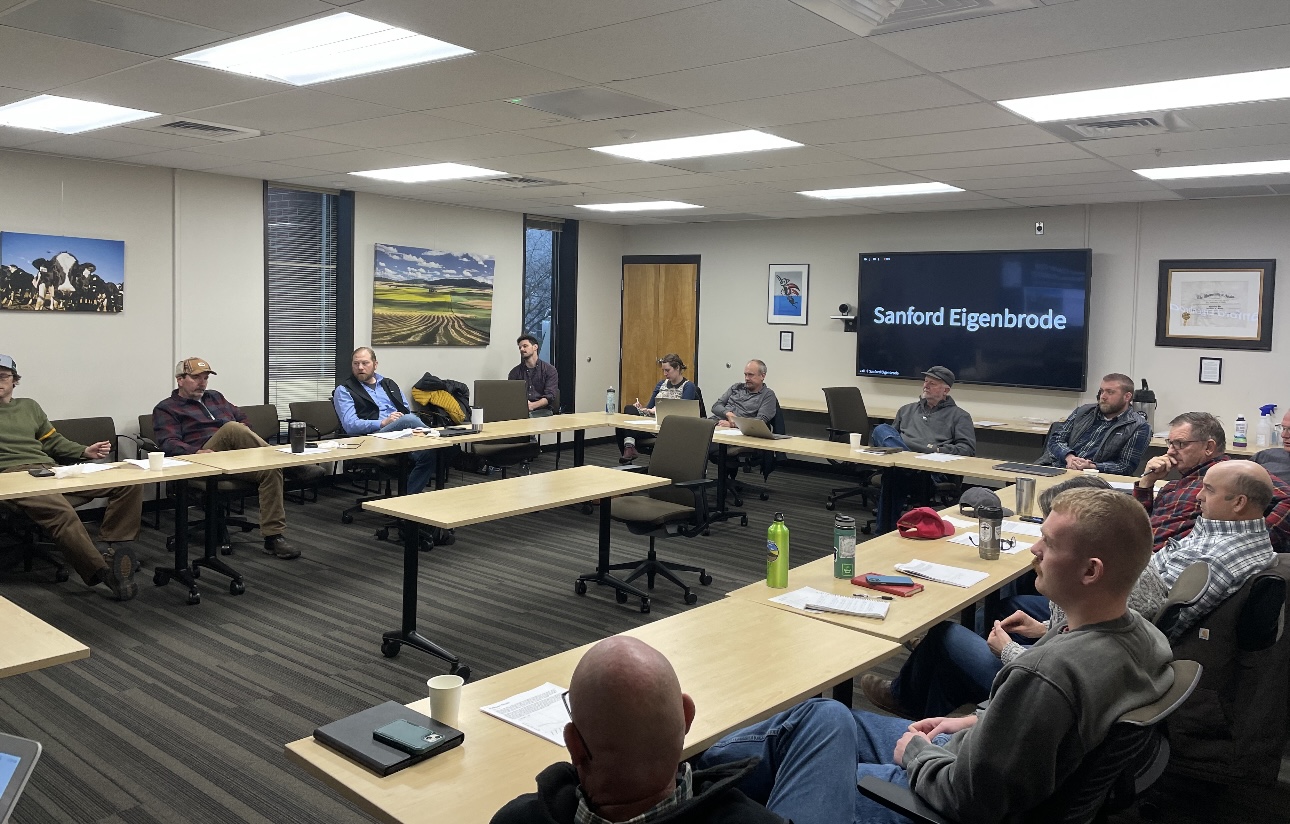
Summer 2023
Eight (four annual crop zone and four annual crop-fallow transition zone) producer cooperator's fields (4 acres each) were identified in the Palouse region in early spring. In late April/early May, nine strip plots (3 replicates X 3 treatments) were set up on each field. Soil moisture sensors were installed at different depths to monitor soil moisture for three cover crop treatments: low diversity, high diversity, and producer choice. Soil cores were collected for analysis. Crop emergence was assessed for all treatments and fields four weeks after seeding. Cover crops were terminated (using herbicide) on three different dates: June 1 for transition zone fields and at first bloom (50% flowering) for annual zone fields. Additional termination dates (TD2 and TD3) were determined based on crop stages and farm conditions. Before each termination date, crops, weeds, insects, and soil were sampled across treatments on each field.
